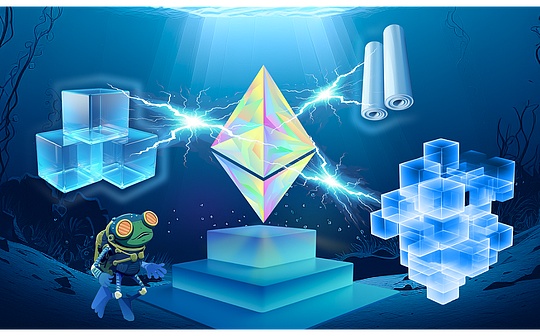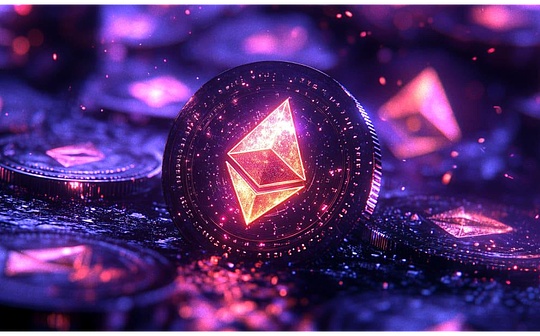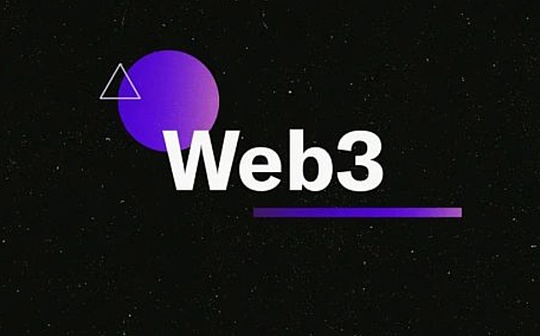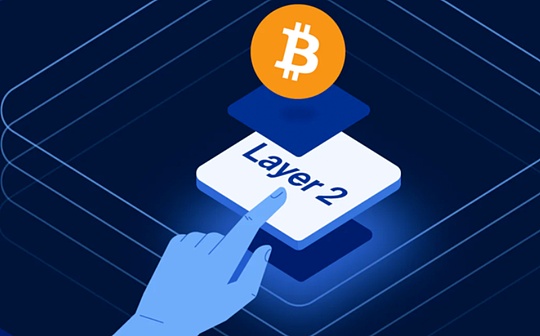
Author: Trustless Labs Source: X, @TrustlessLabs
introduction
With blockchain technology changing with each passing day, Bitcoin is not only widely accepted as a digital asset, but its underlying technology is also constantly evolving and innovating.As the Bitcoin ecosystem gradually expands, various Layer 2 solutions have emerged like mushrooms after a rain, aiming to improve the scalability, efficiency and security of the Bitcoin network.This article will explore in-depth several innovative Bitcoin Layer 2 projects. Through a detailed analysis of the technical principles, team background, financing status and development roadmap of these projects, we will understand how they promote the innovation and development of the Bitcoin ecosystem.
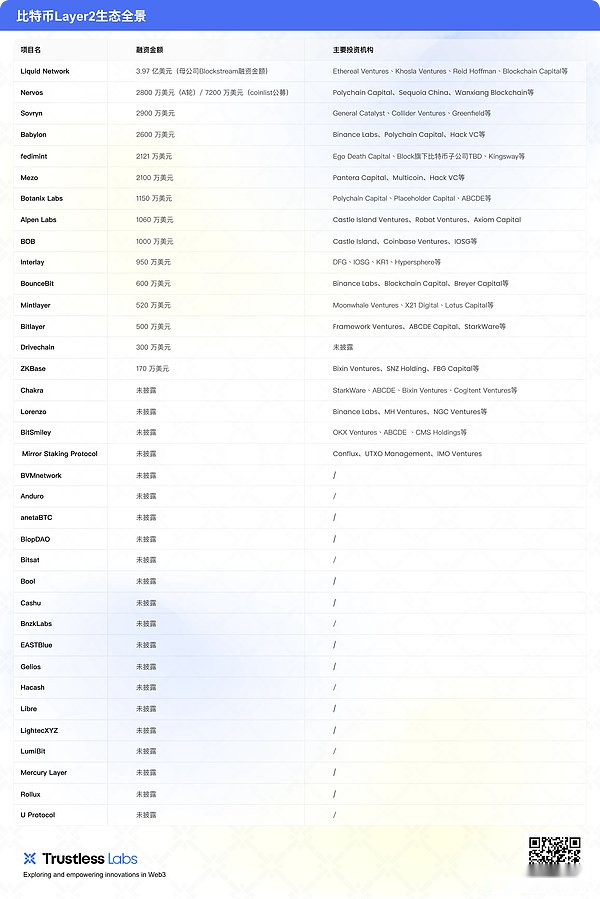
Babylon: Cross-chain staking and Bitcoin economic security
Babylon uses the native stake of Bitcoin (BTC) through cryptography to provide security guarantees for other blockchains with Proof of Stake (PoS).This mechanism not only brings on-chain benefits to BTC, but also attracts widespread attention from the market.
In terms of technical implementation, Babylon’s staking process relies entirely on cryptography and does not require a third-party bridge or custodian.BTC stakers can stake by sending transactions with two UTXO outputs.The first UTXO is written into a time lock script, and after the expiration, the staked can unlock BTC with the private key; the second UTXO is transferred to a temporary Bitcoin address, and the public and private key pair of this address meets the “extractable one-time signature (EOTS)”cryptography standards.When the staker runs the node of the PoS chain and verifies the unique valid block, sign it with the EOTS private key.
If the staker is honest and only signs one valid block at a time, he will receive a validator reward for the PoS chain; if he tries to sign two blocks at the same time, his EOTS private key will be reversed, and anyone can use this privateThe key transfers the pledged BTC, and the fine is imposed, prompting the pledger to remain honest.Babylon also provides BTC timestamp service, which is to upload checkpoint data from any blockchain to BTC’s op_return to enhance security.
Babylon’s stake is a cross-chain stake. The pledged Bitcoin is retained in scripts on the Bitcoin network. The staker can specify a verifier to earn income on the corresponding PoS chain.By pledging BTC, it provides economic security guarantees for other PoS chains, so that BTC can earn profits without leaving the main network, opening up a new track for BTC pledge, which will greatly change the BTC ecological gameplay.
According to DefiLlama, the current BTC interest-generating market size exceeds US$10 billion, of which the active income is US$4 billion, with a yield of between 0.01% and 1.25%. It generally needs to be entrusted to a third-party CeFi organization, or bridging or wrapping BTC.PoS blockchain staking rewards usually range from 5% to 20%.Through Babylon’s pledge business, BTC does not need to be entrusted to third-party institutions, and can obtain 50 times the revenue of traditional BTC, with huge growth potential.
Despite this, most BTC holders are passive holders, 25% of BTC have not been used for more than 5 years, and 67% of BTC have been held for more than 1 year, so it is difficult to convince BTC holders to participate in the pledge.Babylon is conducting test network staking and plans to launch the main network test in May-June. It has not yet announced the launch of liquid staking BTC certificate assets.
Babylon was founded in 2022 by Stanford professor David Tse and Dr. Fisher Yu.Professor Yu is a member of the American Academy of Engineering and is known for his legendary proportional fair scheduling algorithm in the field of wireless communications.On December 7, 2023, Babylon completed a US$18 million financing, led by Polychain Capital and Hack VC, and Framework Ventures, Polygon Ventures, OKX Ventures, IOSG Ventures, etc. participated in the investment.On February 24, 2024, Binance Lab announced its investment in Babylon.
Chakra: ZK-powered Bitcoin re-stake agreement
Chakra is a ZK-powered Bitcoin restake protocol designed to build a secure Bitcoin PoS system.By leveraging ZK-STARKs and middleware chains, the Chakra network has established a native modular paradigm for expanding the BTC ecosystem.On April 30, Chakra announced the completion of a new round of strategic financing, with StarkWare, Bixin Ventures, Cogitent Ventures and others participating in the investment, and the specific amount and valuation information have not been disclosed yet.
Chakra aims to solve liquidity and interoperability challenges and unleash the immense value of Bitcoin.With Chakra, other BTC layer 2 solutions can focus on the execution layer without overly focusing on the settlement of Bitcoin infrastructure.
The Chakra network unlocks liquidity and gains economic security through a shared settlement layer, thus empowering BTC eco-participants.BTC Layer 2’s projects and DApps will benefit from the robust liquidity network effects in this secure, dynamic and prosperous ecosystem.
Chakra allows Bitcoin holders to pledge assets without transferring their assets out of their wallet by generating UTXOs containing time locks.Chakra uses STARK to implement the proof system.Compared with SNARK, STARK provides a zero-knowledge proof solution that does not require trusted settings. Chakra uses STARKs technology to implement zk light client, and can verify pledge information without connecting to the Bitcoin network, ensuring the efficiency of zero-knowledge proof.and security.By introducing CairoVM, Chakra further enhances the scalability and transparency of the system.
nubit_org: Protocol to extend Bitcoin data availability
Nubit is a protocol that extends data availability (DA) scenarios for BTC. It organizes a DA chain similar to Celestia by running PoS consensus, and regularly uploads Nubit’s DA data to the BTC main chain.Nubit has no smart contract capabilities and needs Rollup to be built based on its DA.The user uploads data to Nubit. These data enters the “soft confirmation” state through PoS consensus confirmation. Nubit then uploads the data root to the BTC main chain to complete the final confirmation.Users need to upload data tags in the BTC main chain to query the original data in the Merkel tree of the Nubit full node.
There are currently 100 BTC L2s on the market. If you choose to upload DA to the BTC block, even if the BTC block is full, the main network can only support about 20 L2s at most.Therefore, there is a huge narrative gap in how to connect with BTC and use its security guarantee. Nubit’s DA repackaging idea is an interesting solution.
Nubit has conducted the first round of Pre-Alpha Testnet, and users can earn points by linking to BTC accounts or running light nodes to earn points.The first round of test network has ended, and the second phase of the test network is planned.Nubit’s angel round financing participants include Bounce Finance and Brc 20 founder Domo, who completed a $3 million Pre-Seed round of financing, with dao 5, OKX Ventures, Primitive Ventures and others participating in the investment.
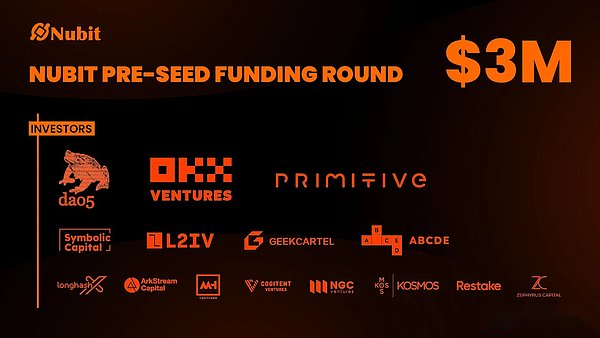
lorenzo: BTC’s liquidity staking agreement
Lorenzo, built on Babylon, is a liquid staking agreement that provides a rapid deployment service of L2-as-a-service, aiming to reduce the risk of confiscation of stakers and release the liquidity of staking BTC assets.The pledger deposits BTC into the multi-signature address of Lorenzo, and can obtain an equal amount of stBTC on its chain as liquidity proof and receive the pledge income.
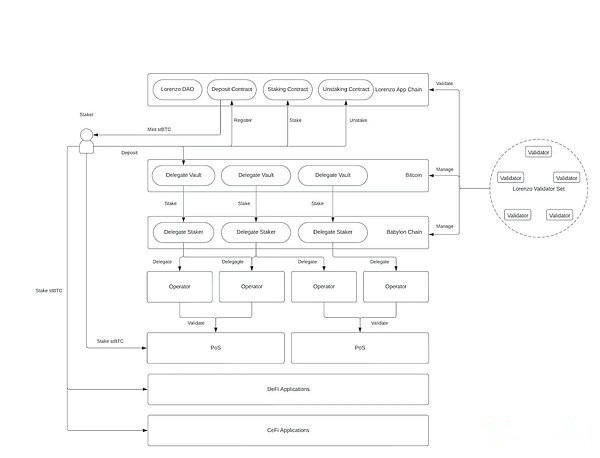
The Lorenzo chain itself is protected by Babylon Bitcoin sharing security. It is an EVM-compatible Bitcoin L2. In the future, it will use a modular method to help more deployment of BTC L2.The Lorenzo chain serves as the direct interoperable chain of these L2 chains.Currently, Lorenzo has announced cooperation with Babylon, BounceBit, etc., and plans to launch a test network based on the Cosmos architecture.Currently, it is working on Babylon’s fourth phase test network to conduct liquidity re-staking testing.
According to Rootdata, Lorenzo is invested by Binance, MH Ventures, and NGC Ventures, and the specific details have not been announced.Currently, Lorenzo announced the launch of the pre-staking Babylon event and jointly held the Bitlayer Mining Gala head mine festival. Users can pledge BTC on the pre-staking Babylon event page to obtain stBTC. All BTC received by Lorenzo will be represented by Lorenzo to participate in Babylon as soon as Babylon is launched.Pledge, but due to the Babylon pledge limit, the actual pledge progress may be determined by the pledge limit that Babylon may have.
bitsmiley_labs: Comprehensive DeFi protocol of Bitcoin ecosystem
BitSmiley is a comprehensive DeFi protocol of the Bitcoin ecosystem, including over-collateralized stablecoin issuance, decentralized lending and derivatives.bitUSD is an over-collateralized stablecoin issued by BitSmiley. The mechanism is similar to MakerDAO, and its decentralized lending implementation method is similar to Compound.bitUSD can be implemented on both L1 and L2 of BTC. It is issued based on the bitRC-20 standard and supports functions such as upgrade, minting, and destruction, making it convenient to represent stablecoins on the BTC main network.BitSmiley also developed AMM bitCow for stablecoins, and is deploying tests on multiple BTC L2s.
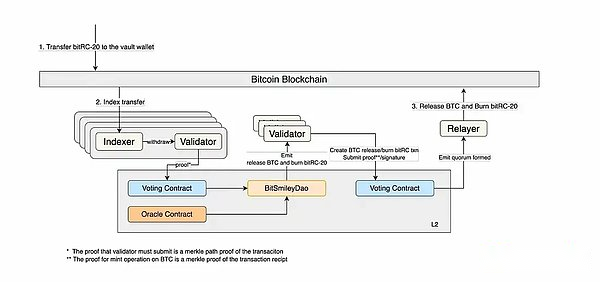
BitSmiley is invested by institutions such as OKX Ventures, ABCDE Capital, Forsight Ventures, Waterdrip Capital, Kucoin Ventures, CMS Holdings, ArkStream Capital and other institutions.BitSmiley released Ordinals NFT M-bitDisc-Black early in the project, which received good market feedback. The NFT was also regarded as a ticket to participate in the test network.
build_on_bob: BTC EVM side chain architecture
BOB is a BTC EVM side chain architecture implemented using OP Superchain SDK. It uses wBTC, tBTC and other ETH packages as gas fees. In the future, the security of BTC will be introduced through the new POW merge mining protocol.The BOB test network has been in operation for several months and has a certain ecosystem. On May 1, the main network was officially launched.In the first phase, more than 40 projects have been deployed on the chain and have more than 300 million TVL.A second deposit activity is underway.The Spice points accumulated in deposit correspond to $BOB tokens.

Pre-staking of participating in BOB must be operated on the ETH main network. If it is BTC, it must be $tBTC and $wBTC across chains, with a return rate of 1.5 times. It also accepts DAI, eDLLR, rETH, USDC, USDT, wstETH, STONE, pledgeReward multiple 1.3 times, and accept ALEX, ETH, eSOV pledge, and reward multiple 1 times.BOB has strong resources and cooperates with $MARA, the largest listed mining company in the US stock market, to launch BTC L2, and announced a US$10 million investment from Coinbase, which has great potential.
Botanix Labs: EVM on Bitcoin equivalent L2
Botanix Labs builds EVM equivalent L2 on Bitcoin, which is run by PoS.Users can deposit BTC into a multi-signature address to participate in the pledge of L2 or bridge BTC to the L2 participation ecosystem.Its characteristic is that these BTC assets are protected by the decentralized multi-signature network Spiderchain.
By pledging BTC, becoming a validator node to participate in PoS and multi-signature network Spiderchain, Botanix uses the hash value of the Bitcoin block as the source, randomly selects the node to participate in PoS block production, and the block header is engraved into the BTC block when the final confirmation is confirmed.All L2’s assets on BTC are protected by the multi-signature network Spiderchain. The nodes randomly form multiple signature groups to control the BTC in the multi-signature address. The cost of doing evil is high because the pledged BTC can be confiscated.
On May 7, 24, Botanix Labs announced that it had received $11.5 million in financing, including Polychain Capital, Placeholder Capital, Valor Equity Partners, Andrew Kang, Fiskantes, Dan Held, The Crypto Dog, Domo (founder of BRC 20) and other series of angels.Investors participate in the investment.
Botanix’s test network has been in operation for half a year, and users can participate in the test and receive a series of NFT credentials.Botanix Labs has started to build L2 on BTC in 2022, with certain technical strength, and the test network is a good opportunity to participate.
bounce_bit: BTC, Income and Restaking Infrastructure
BounceBit is a BTC-based interest-generating and restating infrastructure that integrates CeFi and DeFi services, and uses BTC to secure blockchain security.BounceBit itself is also a BTC EVM L2, L2 PoS staking that can pledge native tokens BB or BTC assets.The absorbed BTC assets are entrusted in centralized custody services supported by Mainnet Digital and Ceffu. The BTC assets deposited by users become bounceBTC on BounceBit and can be pledged to other verifiers to earn verification income on the Internet.BounceBit brings three benefits to users: main network BTC asset custody income, on-chain st project income, restaking rewards.
BounceBit, supported by Binance, will provide 8% of the tokens to Binance Megadrop’s BNB stakers.
citrea_xyz: ZK Rollup that enhances Bitcoin block space
Citrea is a ZK Rollup based on Bitcoin (BTC) enhanced block space capabilities, developed by the Chainway team, focusing on the early implementation of BitVM verification.The Citrea network processes transactions in zkVM and generates zk proofs. These proofs are engraved into the BTC block and are optimistically verified on the BTC main network through BitVM to ensure that the settlement and data availability of Citrea is processed by the Bitcoin main network.

Citrea realizes asset bridge between L2 and BTC main network through a trust-minimized bridge Clementine.When a user needs to withdraw BTC from L2, transfer the assets to the L2 withdrawal contract and attach the BTC address. The operator of the bridge first transfers his BTC assets to the user.Every six months, the Clementine Bridge conducts interruption inspections, and the operator needs to withdraw the deserved BTC based on the original data of the transaction, the SPV withdrawal certificate, and the zk certificate of Citrea.If the operator does evil, the challenger can launch a challenge, expose the original data of the transaction, prevent the operator from extracting BTC from the bridge, and ensure the safety of the bridge assets.
At present, Citrea has completed a seed round of $2.7 million, led by Galaxy. Participating investors include Delphi Ventures, Eric Wall, Anurag Arjun, BatuX, Igor Barinov and James Parillo.
mintlayer: PoS-based Bitcoin sidechain
Mintlayer is a Bitcoin sidechain based on Proof of Stake (PoS) that uses verifiable random functions (VRF) to ensure stable block output speed.Mintlayer uses UTXO structure like BTC, so you can directly enjoy the various advantages of the BTC network.The token issuance on Mintlayer does not require a smart contract, but adds notes through UTXO, similar to BTC’s dyed coins; it can also be used to use UTXO’s atomic exchange, and exchange it with BTC’s main network assets by creating a hash time lock. This is EVMBTC L2 with account structure cannot be realized.
Mintlayer incubates Atomiq DeFi, a DeFi product based on this chain, which uses the characteristics of atomic exchange to allow direct interaction with the main network BTC in Atomiq DeFi.Mintlayer’s token $ATMQ will be issued at the end of the second quarter.
NervosNetwork: A smart contract platform for PoW and UTXO models
Nervos is a smart contract platform based on Proof of Work (PoW) and UTXO models. In 2024, it proposed a complete solution to expand the BTC ecosystem and issued RGB++’s Bitcoin first-layer asset issuance and expansion protocol.Based on years of accumulation of UTXO models, Nervos’s isomorphic binding schemes directly utilize the native capabilities of BTC, and its security is highly correlated with the BTC main network.
RGB++ issues assets on the BTC main network, which is bound to Bitcoin UTXO.Users can choose to “jump” RGB++ assets to the Nervos network for use.The jumped BTC transaction will output a specific UTXO on the main network, triggering related shadow transactions in the Nervos network, and RGB++ asset information is written to the Nervos UTXO, and the unlocking condition is a specific BTC UTXO.Users can enjoy smart contract capabilities, lower handling fees, higher performance in Nervos, and can also jump assets back to the BTC main network through isomorphic binding.
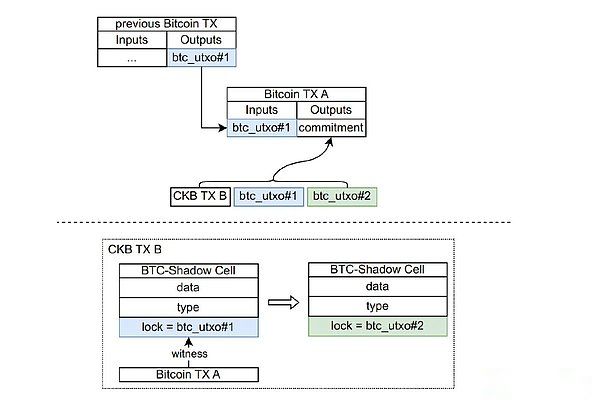
Based on the above isomorphic binding ideas, Nervos also released the UTXO Stack application chain architecture, similar to Ethereum’s OP Stack, and is developing its own lightning network.Nervos has the most complete BTC ecological expansion solution at present.
Mezo: BTC L2 based on tBTC
Mezo is a BTC layer 2 network built on tBTC. It uses the Cosmos EVM architecture to realize asset transfer from BTC to Mezo L2 through the multi-signal cross-chain bridge of tBTC.Mezo introduced Ponte’s economics of HODL Proof, similar to BTC staking’s ve 33.Users can lock BTC on Mezo to participate in consensus. The longer the lock time, the more the staking verification weight and reward you get will increase exponentially.
Mezo’s PoS is divided into BTC part and native token MEZO part, both of which can be obtained as a reward. The incentive points are divided into different incentive pools. 1/3 of the total incentive is obtained by the BTC pledger and 2/3 of the MEZO pledger.Mezo has completed a US$21 million Series A financing, led by Pantera Capital, with participation from Multicoin, Hack VC, Draper Associates and others.Mezo has launched early deposit activities, allowing native BTC, wBTC and tBTC to be deposited and obtained, and the main network is expected to be launched in the second half of 2024.
BVMnetwork: Rollup-aaS platform that supports unlimited expansion
BVMnetwork is a modular Bitcoin L2 protocol on Bitcoin.It is characterized by mass issuance of BTC ecosystem-related L2s, each L2 is optimized for a specific purpose.
The positioning of BVMnetwork is Rollup-aaS (Rollup as a Service).Technically, BVMnetwork adopts a model similar to EVM and uses Bitcoin as the data layer to achieve transaction-level consensus.By using TxWriter and TxReader, BVMnetwork can embed BVM transactions into Bitcoin transactions and ensure that all BVM nodes remain consistent on the network.TxWriter is responsible for embedding BVM transactions into Bitcoin transactions, similar to Ordinals’ technology.TxReader is responsible for filtering BVM transactions in each new Bitcoin block.BVMnetwork is a multi-layer architecture based on Op-Rollups, including multiple levels such as data availability (DA), smart contract platform, Sequencer, Rollup node, execution engine, settlement and bridging.BVMnetwork provides a fully managed solution where users can deploy a BVM Chain in just a few clicks and choose the configuration that best suits their applications.
Currently, $BVM has a market capitalization of USD 143 M, a total supply of 100 M and a circulation of 23 M.Token TGE was conducted on March 24, 2024 and is currently in the pledge stage.Users can pledge BVM tokens to mine SHARD (BVM governance tokens), and the annualized rate of return (APR) given by the official website is 50%.You can also participate in mining other newly launched BTC L2 tokens.

The BVM team has currently released multiple BTC L2s. Alpha chain is the first BTC L2 network. Naka is used for BTC DeFi services. EternalAI is the BTC L2 for AI fully on-chain, and swamps is a BTC L2 that supports SRC-20 DeFi.RuneChain is a BTC L2 focusing on Rune transactions, Bittendo is a BTC L2 supporting gamefi, bloom is a BTC L2 supporting BTC staking and re-staking. The chain under planning also includes several new L2s introducing POW and RWA.
The BVM team is iterating quickly, and the speed of accumulating projects and hot topics is very fast.The above projects are mostly launched by airdropping to old holders and potential new users, and using old assets to participate in IDO.The BVMnetwork team is composed of some Bitcoin OG members active on Twitter. The team participated in the development of BTC L2 Trustless Computer in 2023, but the response was mediocre at the time. Later, Friend.tech on Bitcoin was developed and turned around. It was not until BVM got it.success.
BitLayerLabs: BTC L2 project based on BitVM
BitLayerLabs is the first Bitcoin Layer 2 network (L2) based on BitVM. It supports multi-VM compatibility and EVM, and uses Op-Rollup technology.On March 27, 2024, it announced the completion of a $5 million seed round of financing, led by Framework Ventures and ABCDE Capital.Other participating institutions include StarkWare, OKX Ventures, Alliance DAO, UTXO Management, etc.Obtained OKX strategic financing on May 19, with the amount not disclosed.
BitLayerLabs is positioned as Op-Rollup. Its asset bridging method is planned to use DLC and BitVM, which allows users to withdraw assets (escape channels) on BTC when there is a problem with the main network.Through BitVM, BitLayerLabs can build a Turing-complete computing layer on the Bitcoin stack, leveraging basic building blocks such as hash locks, time locks, and large main root trees to create systems that can handle complex computing and contracts.BitLayerLabs supports multiple virtual machines, including EVM, CairoVM, SolVM and MoveVM.
But the current mainnet uses PoS + multi-signal bridge method.BitLayer plans to implement a minimizing BitVM implementation in Q2 in 2025 to replace the current bridging solution.
Currently Bitlayer has released mainnet V1 and announced a developer incentive program and early supporter NFT campaign.Currently, mining activities are being carried out in collaboration with Lorenzo, Bitsmiley, Avalon, Bitcow, Pell, Enzo, and Bitparty, and the activities will last for two weeks until June 10th.
Roadmap Reality, Bitlayer will realize mainnet V2 in September 2024, transform it into an equivalent Rollup model, launch the Sequencer+DA model, based on the DLC/BitVM technical protocol to ensure user asset deposits and withdrawals.Mainnet V3 was implemented in June 2025, using BitVM for L1 verification challenges, achieving BTC security equivalent, implementing OP challenges based on BitVM and BitVM solution DLC-Attestors for asset escape.
Alpen Labs: Modular ZK-Rollup Project
Alpen Labs is committed to developing the ZK-Rollup technology. Although there is less information disclosed, its team and financing background are quite good.The project is positioned as a modular ZK-Rollup, native ZK validator and optimistic ZK bridge.
Alpen Labs’ ZK verification technology continues the idea of BitVM, but designed a ZK SNARK validator SNARKnado, which can reduce the number of interactive verification rounds compared to BitVM’s validator design, thereby improving feasibility.Some code has been opened sourced.
On April 10, 2024, Alpen Labs announced that it had completed a seed round of $10.6 million, and the actual financing was completed in 2023.Investors include Castle Island Ventures, Robot Ventures, Axiom Capital, etc.CEO and founder Simanta Gautam founded Alpen Labs in 2022, focusing on BTC and zkSNARKs.Gautam graduated from MIT and has worked as a research intern at MIT, NASA, Amazon and other institutions, and founded Synapse.Alpen Labs has not released the code on GitHub and the roadmap has not been released yet.
Anduro: Sidechain system supported by Mara, a listed mining company in Nasdaq
Anduro is a multi-side chain platform incubated by Marathon Digital Holdings, a listed mining company on Nasdaq, aims to provide side chain solutions.
Anduro designed two side chains: BTC-compatible COORDINATE and ETH-compatible ALYS.COORDINATE is a UTXO chain that supports protocol innovations such as Ordinals, while ALYS targets entity rwa assets.
All Anduro sidechains are merged and mining with Bitcoin, and its native asset Anduro BTC is linked to BTC 1:1.Anduro sidechains maximize Bitcoin’s native properties, including blocks generated using Proof of Work (PoW).
anetaBTC: Wrapped BTC based on Cardano and Ergo
anetaBTC is a Wrapped BTC project based on Cardano and Ergo, aiming to achieve the DeFi liquidity of BTC on these two chains.Through smart contract minting and redemption of AnetaBTC, anetaBTC allows BTC holders to participate in various activities such as lending, trading and liquidity mining in the DeFi ecosystem of Cardano and Ergo without giving up holdings of BTC.
anetaBTC’s tokens include $cBTC, $NETA and $cNETA, where $cBTC is a Wrapped BTC token minted on the Cardano and Ergo networks by anchoring BTC.At present, $cBTC is still being cast, and $cNET’s TGE has been completed.$cBTC is the project’s Wrapped BTC, and currently 17.6 are cast.$NETA and $cNETA are tokens for the project, with a total supply of 2 billion, issued on Ergo and Cardano respectively.cNETA’s market value is currently 2.53 M, all of which have been circulated, and 70% are publicly allocated.
At present, the anetaBTC project has launched the V1 version main network, the V2 version test network is expected to be launched in the second quarter of 2024, the V2 version main network is scheduled to be launched in the third quarter of 2024, and the V3 version is scheduled to be released in 2025.
The project was founded by Austin Regron, who has many years of development experience and focuses on introducing BTC into the Cardano and Ergo ecosystems.Co-founder Willie McClinton is a PhD student at MIT. He has been involved in the development of the project but has quit.
BiopDAO: Op Rollup project that supports the BRC-20 protocol
BiopDAO is a project based on Op Rollup, focusing on supporting protocols such as BRC-20, and providing Biop Virtual Machine (BVM) to support smart contracts.The goal of this project is to create an efficient, secure and scalable Layer 2 solution.BiopDAO’s main token is $Biop, with a total supply of 21,000,000.Currently, $Biop’s market capitalization is about $500,000, while the FDV is $2.5M.BiopDAO plans to launch three versions of L2 blockchain: V1, V2 and V3.The V1 version is scheduled to be launched in the first quarter of 2024, the V2 version is scheduled to be launched in the second quarter of 2024, and the V3 version is scheduled to be launched in the fourth quarter of 2024.Although BiopDAO’s code is open source, the project is currently progressing slowly and the completion is not high.
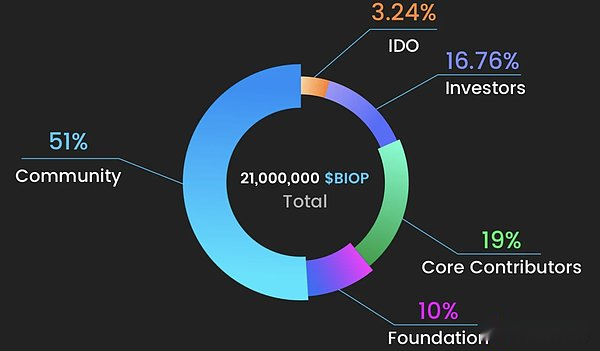
Bitsat_Official: Integrate AI into BTC L2’s ZK-Rollup project
Bitsat is a full-chain interoperability protocol compatible with EVM and Cosmos, aiming to integrate AI into Bitcoin Layer 2 network (L2).
At the heart of Bitsat is HyperLayer, a high-performance, scalable platform for deploying and running distributed AI applications on the Bitcoin network.Technical features include ZK-Connector, which enables efficient data and assets transmission, VM Engine is compatible with Ethereum virtual machines (EVM), and an asynchronous high-performance consensus mechanism to provide high performance and scalability.
The project has not yet released relevant Tokenomics information.Bitsat’s roadmap includes going to the test network in Q2 2024 and going to the main network V1 in Q4 2024.
Bool_Official: Decentralized, secure Bitcoin verification layer
Bool is a modular data availability (DA) layer that uses ZK, MPC, and TEE (Trustable Execution Environment) technologies.
The project is positioned to provide a decentralized and secure Bitcoin verification layer driven by MPC-based distributed key management.Technical features include protecting membership using Dynamic Hidden Committee (DHC) and Ring Verified Random Function (Ring VRF) protocols, and performing all key management processes in a Trusted Execution Environment (TEE).In terms of Tokenomics, the total amount of $BOOL is 1 billion, and the initial allocation is 500 M.
The roadmap includes completing code audits in June 24, launching the main network in July, and opening BTC staking in August and beyond.The code is open source, with high completion, and is awaiting audit.
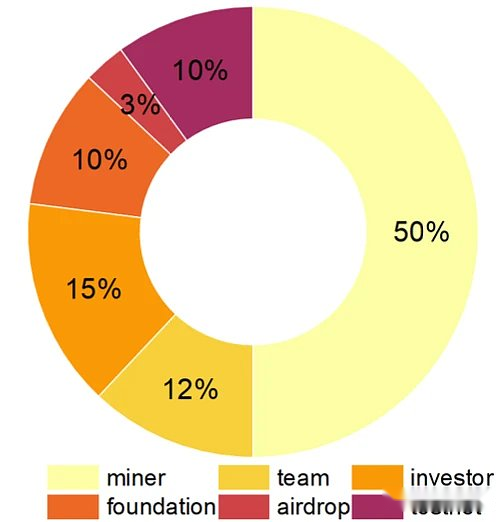
CashuBTC: BTC project that emphasizes privacy protection
Cashu is a free and open source Chaumian ecash system built for Bitcoin and deeply integrated with the Lightning Network to ensure privacy.More recognized by the BTC core community.Cashu is positioned to provide an open electronic cash protocol called Cashu NUT, which uses blind signatures to protect user privacy, and transactions are peer-to-peer.
Technical features include the Lightning Node Operator acting as the user’s custodian on the Lightning Network and distributing electronic cash to the user.Cashu is an open source protocol that already has multiple systems support and applications.
BnzkLabs: BTC L2 project based on ZK-Rollup
BnzkLabs plans to support the ordinal BRC 20 protocol (zkToken), and then support BRC 721 (zkNFT) and other protocols. The progress is not enough and no code is seen.In terms of Tokenomics, the total supply of $BNZK tokens is 21 million, the team reserve is 10%, the ecosystem reward is 20%, the public and private sales are 40%, and the mining reward is 30%.The roadmap includes going to the test network in April 24 and going to the main network in September.The completion is currently very average and no code is seen.

Drivechain LayerTwoLabs: Bitcoin Sidechain Technology
LayerTwo Labs was proposed by BTC Drivechain to create a Bitcoin sidechain team.Drivechain is a BTC sidechain technology for merged mining, aiming to be a soft fork upgrade for Bitcoin, and proposes a new sidechain interaction method.
Paul Sztorc, the founder and CEO of LayerTwoLabs, is a former researcher and statistician at Yale University and a senior practitioner of Bitcoin. He elaborates on Drivechain’s in BIP 300 and BIP 301.concept.
Drivechain is a BTC side chain technology. Through the hash rate custody mechanism and miner scoring system, Bitcoin’s large-scale side chain expansion is achieved without changing the core security and decentralization characteristics of Bitcoin.The basic mechanism is to create a new Bitcoin address, and any funds sent to such addresses will be locked, and these funds can only be spent if all miners agree.Miners reach a consensus through the “scoring” system that once the score of a certain transaction is high enough, the transaction will be released and funds will be transferred from the side chain to the main chain.
Drivechain allows the Bitcoin network to experiment with new use cases through sidechains, such as issuing assets, fully private transactions, state blockchain contracts, etc. without sacrificing the core security and decentralized characteristics of Bitcoin.The roadmap for this project has begun to be implemented, and the test network already has Launchers for Linux, Mac and Windows.The code is open source, with good completion and frequent updates.
Financing of 3 M USD in December 22, not disclosed.
EASTBlue_io: L2 solutions focused on large-scale applications
EASTBlue is an L2 solution focusing on large-scale applications, backed by NEAR, using Rollup technology and multi-VM support.
The project is based on Rollup and aims to use NEAR’s chain signature and account aggregation to introduce a new programmable layer to Bitcoin through the EAST Account Vault Model (AVM), solve the congestion and expansion problems caused by Ordinals, and improve the smart contract capabilities of BTC..EASTBlue implements a new paradigm of cross-chain transactions by transferring account ownership to smart contracts.
$EAST airdrop will begin on March 22, 2024, with priority given to PARAS token holders.The token supply is 1 billion, and $EAST issuance dynamically based on ecosystem behavior and performance, with a lock-in period of 5 years.Most of the tokens (52%) are allocated for community building and ecosystem introduction.Staking functionality will be launched, but the complete roadmap has not been found yet, and the project code is not seen.
The Tokenomics allocation rules are as follows:
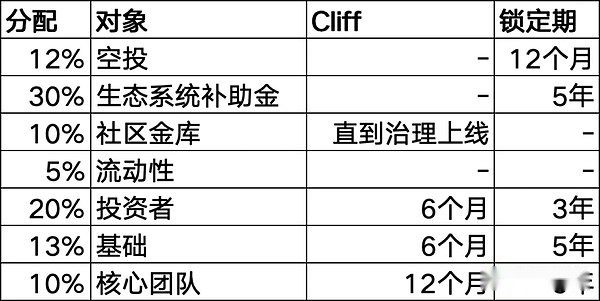
fedimint: Open source agreement for community custody and transaction of Bitcoin
fedimint is an open source protocol for community custody and trading Bitcoins, aiming to emphasize privacy protection and reduce dependence on large centralized exchanges.Co-founders include Justin Moon and Obi Nwosu, co-sponsors of austinbitdevs.com and CEO of former British Bitcoin exchange Coinfloor.The project has completed a seed round of $4.2 million and a Series A round of $17 million, with a total financing of $21.21 million.Fedimint has recently released the v 0.3.0 version, and has made great progress in automated testing of version compatibility.
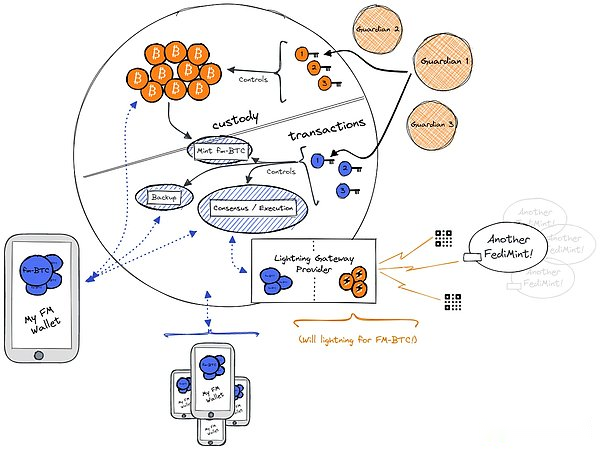
GeliosOfficial: Supports Runes standard and EVM friendly BTC L2
Gelios is a Bitcoin L2 that supports Runes standards and EVM-friendly, designed to facilitate communication and seamless cross-chain interaction between applications.Gelios As the dApp layer of Bitcoin, users can transfer BTC and WBTC to Gelios, thereby unlocking the potential of BTC DeFi.The project has cooperated with Ave.ai, OKX, Bitget, Gate, Unisat and others.At present, the 2D card placement game Crimson Heart has been deployed to the Gelios network.
Gelios initial supply is 210,000,000 $gOS, initial market value is 40 million US dollars, and initial liquidity is 100 ETH.$gOS has been launched on Alphanet and can be traded with ETH on Uniswap.Roadmap consists of airdrops conducted in three phases: test network (end), alphanet (currently underway) and mainnet (not started).
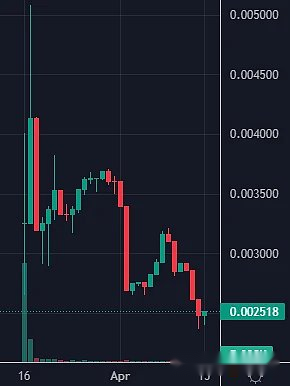
HacashCom: Bitcoin solution for multi-layer expansion and state channel
Hacash.com is a project dedicated to solving the Bitcoin expansion problem. It realizes one-way transfer of Bitcoin through Layer 1 and performs payment operations in Layer 2 deployment status channel. It further proposes the Layer 3 concept to achieve ecological expansion.
Since its operation in 2019, the Hacash Layer 1 network has adopted a Proof of Work (PoW) consensus mechanism to achieve issuance, distribution and settlement through three PoW currencies: HACD, BTC and HAC to solve the problem of Bitcoin’s lack of monetary attributes.Layer 2 is mainly used for large-scale payments, building payment settlement channel chains, and also serving as the infrastructure of Layer 3.Layer 3 supports multi-chain interaction and application-building ecosystem to support asset issuance, smart contract operation, on-chain data interaction and cross-chain.The founding teams include Ken You, Trevor Stoll and Leo Yang.The project once crowdfunded $60,000 for listing on the Mexc exchange.Currently in the test network stage.
Bitcoin can be transferred to Hacash in one direction, maintaining its ownership and native value attributes, and the total supply remains at 21 million coins, and circulates in Hacash in the smallest Satoshi unit.BTC transfers resulted in the creation of HACs, and the issuance of HACs gradually decreased. After 1.05 million BTC transfers, only 1 HAC was generated for every 1 BTC transfer.The total supply of HACD is approximately 16.77 million, generated through mining and HAC bidding, the mining difficulty gradually increases, with a maximum daily output of 58. It is expected that all HACDs will take 800 years, but all HACDs may never be produced.


interlayHQ: Bitcoin-backed assets that realize cross-chain interoperability
Interlay’s flagship product is “interBTC,” a fully collateralized one-to-one Bitcoin-backed asset that enables interoperability between multiple blockchain ecosystems while maintaining the anti-censorship nature of Bitcoin.Technically, Interlay v2 introduces native DeFi functionality. By creating a market that caters to Bitcoin holders and establishing deep liquidity in these protocols, users can easily access Bitcoin-centric DeFi use cases, such as swap, Borrow &Lend, Multi-Chain BTC, Stake BTC.Users can earn income by locking BTC after 1:1, minting iBTC, using iBTC as collateral for DeFi transactions, and then redeem BTC.Interlay has passed the audit of well-known audit institutions: information systems, quarkslab, nccgroup, and security research labs.The founding teams include Alexei Zamyatin and Dominik Harz, both of which are PhDs from Imperial College of Technology.As of now, Interlay has completed two rounds of financing, with a total financing of US$9.5 million. The most recent financing was December 21, 2021, with a financing amount of US$6.5 million. Investment institutions include IOSG Ventures, DFG, HYPERSPHERE, etc.
libreblockchain: Faster and cheaper Bitcoin L2
Libre is a Bitcoin Layer-2 solution that makes Bitcoin and Ordinals faster, cheaper and easier to program.Libre.org is a new all-in-one platform for Bitcoin ordinal numbers, providing functions such as search, wallet, trading market, and inscriptions.Libre does not require Tokens, built-in Typescript and other top languages, and uses BTC to join in within seconds, without KYC.Libre handles 4000+ transactions per second, zero transaction fees, and has on-chain AMM.Libre’s main network was launched on July 4, 2022, and released 10 million LIBRE airdrops, and in the end only 277,000 were claimed.Libre also launched a beta version of BRC 20 Dex and a mobile APP to facilitate users to trade in inscriptions.
LightecXYZ: Bitcoin Layer 2 solution based on ZKP
LightecXYZ aims to build Bitcoin’s Layer 2 with zero-knowledge proof (ZKP) technology, and its main projects include opZKP and zkBTC.opZKP is completed by transferring complex calculations to off-chain and generating a concise proof, and then verifies the proof of the calculations performed off-chain by introducing a new opcode in the Bitcoin scripting language on-chain.This solution makes up for the incomplete limitations of Bitcoin Turing, making it possible to deploy various applications on Bitcoin.opZKP has complex technology and a long development cycle.zkBTC is an application based on opZKP, realizing a cross-chain bridge between Bitcoin and Ethereum.This solution allows users to deposit Bitcoin at a specified address to mint ERC-20 tokens one-to-one pegged to Bitcoin $zkBTC.The entire process generates a ZKP proof on the off-chain, and then verifies the proof on the Ethereum smart contract. After confirming the transaction, the corresponding amount of $zkBTC tokens is minted.When the user redeems, the corresponding amount of $zkBTC tokens must be destroyed, and a certificate is generated off-chain, and the Bitcoin is redeemed after verification is passed.The Lightec team did not master the private keys of the specified address throughout the process to ensure security and decentralization.
The Lightec team is actively developing the zkBTC project and is expected to be launched on the test network in a few months.At the same time, they are initially building a token economic model to support the further development of the opZKP proposal and promote the construction of the Bitcoin Layer 2 ecosystem.
Liquid_BTC: A fast, secure and confidential Layer 2 solution for Bitcoin
Liquid Network is Bitcoin’s Layer 2 solution that provides fast, secure and confidential settlement and digital asset issuance, including stablecoins, securities tokens and other financial instruments.Liquid Network uses a special Federal Byzantine Agreement (FBA) to compress block generation time to within 2 minutes.Protect transaction amount and address information through Confidential Transactions technology and zero-knowledge proof.Liquid Network allows users to trade fast and privately with LBTC (Lightning Bitcoin) as a tradable digital asset. Currently, there are more than 3,700 LBTC in circulation.
Liquid Network is a distributed alliance of companies centered on Bitcoin, including Bitbank, BTCBOX, Aquannow, Bitcoin Reserve, Cobo, OpenNode, etc.Bitfinex Securities launches El Salvador’s first tokenized debt to fund the New Hilton Hotel, and the tokens will be issued on the Liquid Network.
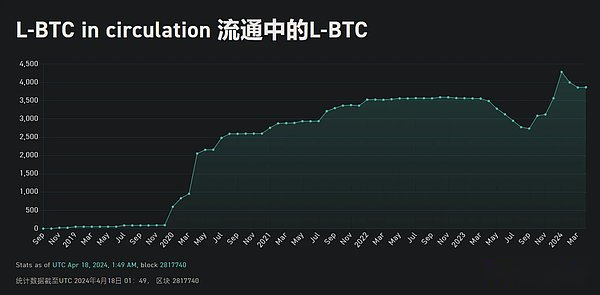
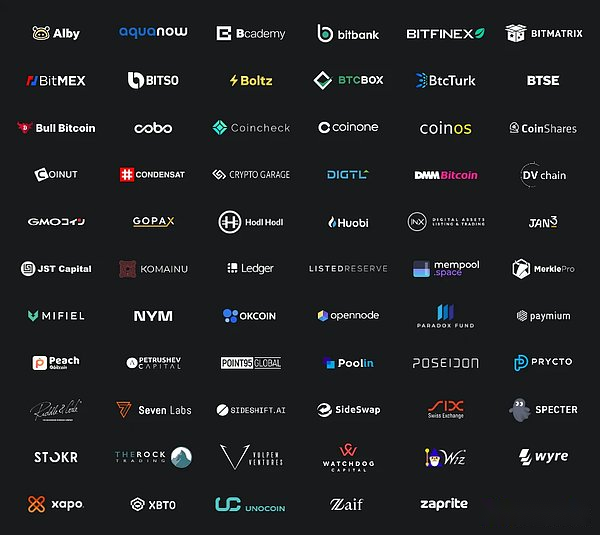
Liquid Network was developed by Blockstream. The company was established in 2014 and its products include Liquid, Blockstream Green, etc.The company raised $21 million in seed round in 2014, including Ethereal Ventures, Khosla Ventures, Reid Hoffman, Blockchain Capital, Ribbit Capital, Mosaic Ventures, Future Perfect Ventures, AME Cloud Ventures, Max Levchin, Nicolas Berggruen, Danny Hillis, Eric Schmidt’s Innovation Endeavors, Ray Ozzie participated in the investment.In 2016, the A Series A financing was US$55 million, with Horizons Ventures, AXA Strategic Ventures (AVP), Blockchain Capital, AME Cloud Ventures, Future Perfect Ventures, Khosla Ventures, Mosaic Ventures, Seven Seas Venture Partners, and Batara Eto participating in the investment.In 2021, the B round of financing was US$210 million, with a valuation of US$3.2 billion, with Baillie Gifford and iFinex participating.
Ecological projects include wallet AQUA Wallet, DeFi products Bisq, Peach Bitcoin, Boltz, NFT projects tokenocean, as well as SideSwap and Debifi.

LumiBit L2: Enhanced scalability, privacy and decentralized BTC Layer 2 solutions
LumiBit is a BTC Layer 2 solution that utilizes ZK-EVM to provide enhanced scalability, privacy, and decentralization.It features a universal circuit design for seamless Ethereum smart contract migration and efficient transaction verification.LumiBit uses Type 2 ZK-EVM, which is highly compatible with EVM and optimizes data structures to improve verification efficiency.Integrate Halo 2 zero-knowledge proof mechanism, no trusted settings are required, and enhanced security.Introducing an abstract account of Omin wallet, allowing users to trade on the LumiBit chain using local Bitcoin keys.The LumiBit test network is online.
Mercurylayer: Bitcoin L2, which focuses on privacy and efficiency
Mercury Layer is a Bitcoin L2 that focuses on enhancing privacy and efficiency through state chains and realizing off-chain transfer and settlement of Bitcoin UTXO.Mercury Layer utilizes state chains and blinded joint signature technology to facilitate instant and free transactions without sacrificing fund custody and security.
Mirror_L2: Decentralized Proof of Stake Bitcoin Layer 2 Solution
Mirror Staking Protocol, formerly known as Mirror L2, is a decentralized Proof of Stake (PoS) BTC Layer 2 solution, compatible with EVM and smart contracts, using BTC as GAS.Mirror Staking Protocol uses overlapping grouping multi-signature (MSG) algorithm, managed by hundreds of nodes, balancing BTC staking rate, security and decentralization.Generate mBTC anchored with BTC 1:1 is compatible with EVM and has been used in the restating mechanism.
Mirror designed a set of node management solutions.Nodes are elected by the community through four rounds of elections, with 100 nodes in the first round of elections gradually increasing to 300, 600 and 1,000.The node must pledge at least 1 BTC to the mirror channel and act as a decentralized web host for 12 months.The election champion will receive a call option reward of 1 million MIRR (Mirror’s governance token) with a strike price of US$0.12.
A seed round of financing was conducted on March 4, 2014. The investors include Conflux, UTXO Management, and IMO Ventures, with the amount not disclosed.In the future, Mirror Staking Protocol plans to build TVL and ecosystems with other BTC L2 projects through the “Stake Once, Earn Twice” campaign.In March, it announced the completion of its first round of financing and the opening of the test network.Each redemption will get 10 points, while minting will not get points.
Rollux L2: Bitcoin Layer 2 solution that is compatible with Ethereum smart contracts
Rollux is developed by Layer 1 blockchain Syscoin (SYS), an Optimistic Rollup equivalent to EVM, and plans to be converted into a ZK-based Rollup in the future.Rollux supports nearly instant transactions and contract deployments, protected by the Bitcoin network.Syscoin blockchain is a two-layer blockchain based on PoW consensus. The core is Syscoin blockchain, and NEVM provides smart contract functions.
Syscoin was established in April 2014 and was developed by Layer 1 blockchain Syscoin (SYS).Syscoin announced in June 2022 that it had received a US$20 million Ecological Development Fund.Syscoin has been launched on Binance, with the current FDV of $170 million.
SovrynBTC: Decentralized trading and lending platform based on Bitcoin
Developed on Rootstock (RSK), Sovryn is a decentralized transaction and lending platform based on Bitcoin, providing a full set of DeFi services, including stablecoins, AMMs, lending pools and margin trading.
Sovryn founder Edan Yago, graduated from Tel Aviv University and is the founder of CementDAO and Sovryn.John Light, product manager, was formerly the head of governance at Aragon One.The project has experienced 4 rounds of financing: 2020 seed financing of US$2.1 million, with Greenfield, Collider Ventures and Monday Capital participating; 12.5 million in January and March 2021; 9 million in April 2021, Anthony Pompliano, Cadenza Ventures, Gate Ventures, AscendEX, Blockware, Consolidated Trading participated in the investment; raising US$5.4 million in October 2022, with General Catalyst, Collider Ventures, Bering Waters, Bollinger Investment Group, and Balaji Srinivasan participated in the investment.
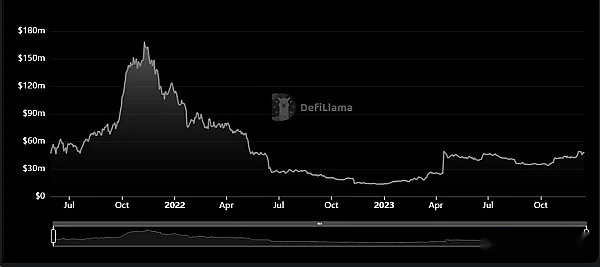

u_protocol: Full-chain decentralized synthesis BTC
U Protocol is a native full-chain decentralized synthetic BTC, compatible with EVM, and its main products include uBTC and U Bitcoin Thunder Network.uBTC is a decentralized Bitcoin for Layer 2, supported by Lido’s Wrapped Staked Ether and BTC.b.u_protocol uses BTC to determine the redemption mechanism enhances the user experience by charging a one-time redemption fee and prevents frequent redemptions.The system sets a price ceiling of 1.10 BTC. When the uBTC:BTC exchange rate exceeds this level, the borrower can obtain instant profits by maximizing the borrowing and selling uBTC.
ZKBaseOfficial: Infrastructure Agreement Based on ZK Technology
Based on zero-knowledge proof (ZK) technology, ZKBase provides expansion solutions for mainstream blockchains such as Ethereum and Bitcoin, providing decentralized exchanges, cross-chain bridges, layer two payments, NFT markets and layer two domain names.a series of services.ZKBase will release AMM ZKSwap that supports BRC 20 assets to improve market liquidity and capital efficiency.Compared with other protocols, ZKBase technology focuses on privacy and fast transaction processing, while providing a more secure method, which is comparable to the security of the BTC network.Chief Strategy Officer Antonio Saaranen has served as CSO of the Qtum Foundation.Hailan Jia, head of marketing and public relations, has served as senior public relations manager of Huobi Global Station.The 2020 Angel round of financing was US$1.7 million, with a valuation of US$25 million. Investors include Bixin Ventures, SNZ Holding, FBG Capital, etc.
Conclusion
The number of Bitcoin Layer 2 projects is growing rapidly, and there are nearly 100 projects, which can be divided into four categories in total.
The first category is EVM side chain, which is the largest number of projects. Most of them use rollup modular method to deploy EVM chains. The PoS consensus is used, and the threshold for entrepreneurship is low and strong capital operation capabilities are required to effectively start.Some of these projects try to introduce more latest modular solutions like ZK.
The second type of projects continues the design ideas of BitVM and innovates in verification methods, which introduces BTC security to a certain extent.However, these projects have chosen to launch an EVM + PoS main network to develop the ecosystem. In essence, it is no different from the first EVM side chain. There are certain narrative expectations and can often obtain some high financing, which is also a VC.A track of concentrated investment.
The third category of projects focuses on deposit pledge of BTC, using BTC as an asset pledged in PoS, and introduced a BTC re-staking concept similar to eigenlayer to try to attract more BTC savings.The leading project Babylon innovates at the cryptography level in the pledge of BTC, and most other projects innovate at the business level, such as introducing BTC staking into CeFi to create more benefits.We believe that BTC re-staking will be the mainstream of the future ecosystem. Before implementing BitVM, the on-staking security guarantees it provides will solve the BTC narrative problem of the above-mentioned BTC EVM side chain.
The fourth category of projects has conducted more explorations on BTC natively, such as further developing the UTXO model and trying to create new sidechain asset binding solutions such as Nervos based on UTXO.BTC native exploration also includes the continued exploration of joint mining side chains.There are also a few projects trying to promote BTC upgrades to introduce more script operators to expand the BTC ecosystem, which is the most degenerative line at present.
The BTC ecosystem is in a rapid development stage, with various innovative projects emerging to solve the challenges of Bitcoin networks in terms of scalability, security and efficiency.From Babylon’s cross-chain staking to Nubit’s extended data availability, from Lorenzo’s liquid staking protocol to BitSmiley’s comprehensive DeFi protocol, these projects jointly promote the diversified development of the Bitcoin ecosystem through different technical paths and business models.By continuing to pay attention to and participate in these cutting-edge projects, communities and developers will be able to better grasp the future development trends of blockchain technology and jointly build a more efficient, secure and diversified blockchain ecosystem.




